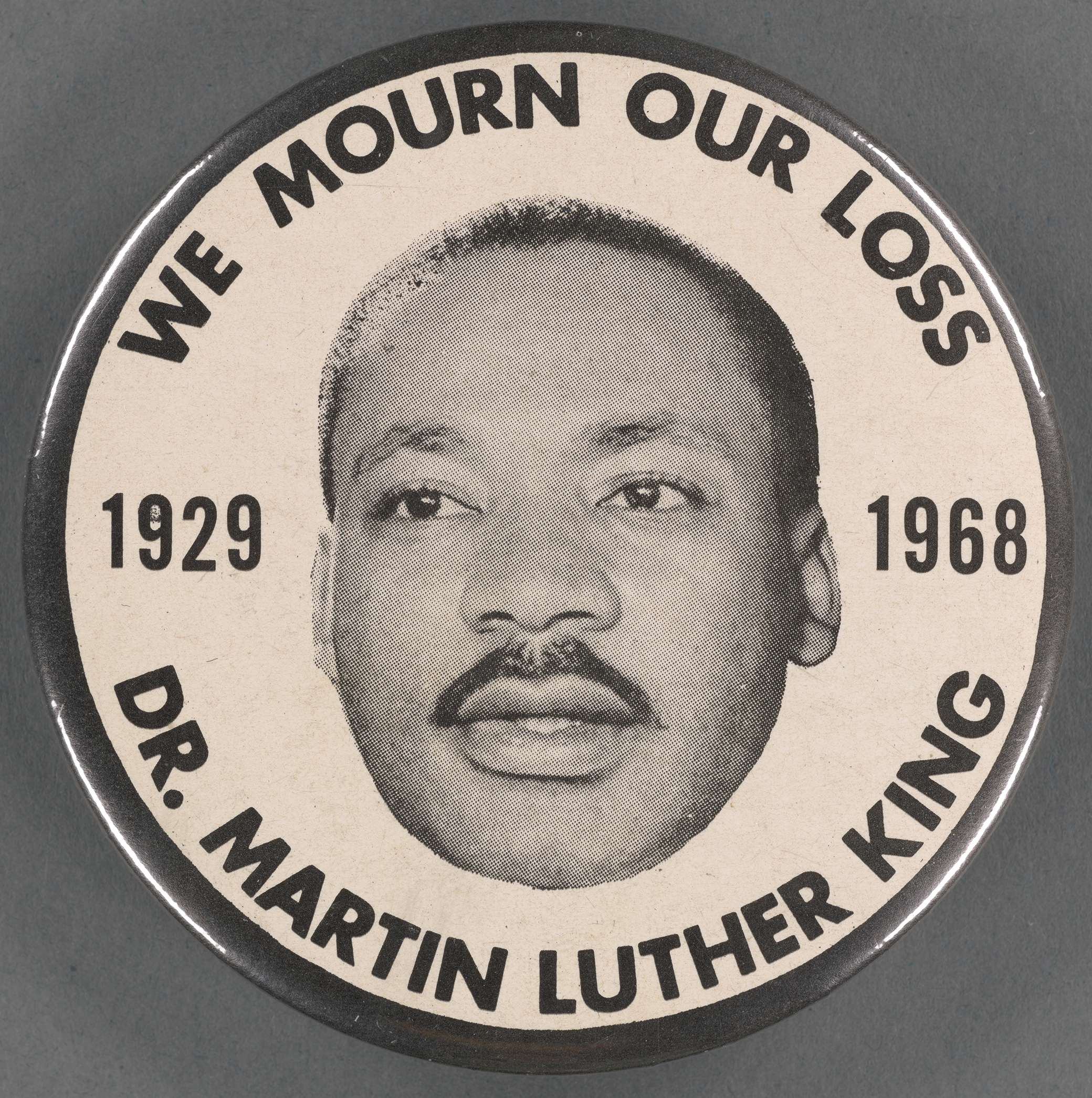
Martin Luther King Jr. button, c. 1968. Schomburg Center for Research in Black Culture, Art and Artifacts Division, Button Collection.
• Remembering Martin Luther King Jr.’s assassination, fifty years later: King’s political philosophy, the aftermath in DC, recalling how the riots in Chicago were covered (or ignored), a march in Memphis, the music of that moment, Robert F. Kennedy’s speech, the premature end to a budding movement, what the moment looked like in 1968, an annotated Freedom Budget, and “Where have all the rioters gone?”
• Reflecting on the Twitter feeds of dead writers: “It’s like when you see the detail of a painting or a tapestry—you hope that the detail is something interesting, like a unicorn hoof or the face of a peasant, but if it’s just the corner of a hat, then there’s nothing to see. So as long as the detail is framed well, I think that’s an honor. I think that’s celebration.” (The Paris Review Daily)
• Hamlet, a play that feels ephemeral on the page and endlessly dated on the stage. (The New York Review of Books)
• Trying to look at Rachel Carson holistically in the dense pages of her entry in the Library of America collection: “Silent Spring is typically taken as the summit of Carson’s career, but it’s an earlier essay, “Help Your Child to Wonder,” included in the Library of America edition, that best captures Carson’s ethic.” (Bookforum)
• Watching people watch the RFK funeral train: “Fusco must have realized that it was faces that he wanted, and he compensated for the movement of the train by focussing on a single person and moving his camera while he pressed the shutter, so that individual faces are often captured in focus against a slightly blurred background. There is a nakedness in them that is rare in public—these people don’t think that anyone is looking at them—a nakedness that many photographers have tried to capture. It’s here.” (NewYorker.com)
• This week in unexpected sentences: “Nobody quite knows how the skull ended up in the pub.” (BBC)
• Amsale Aberra, “an Ethiopian-born fashion designer whose simple, minimalist aesthetic transformed the modern American wedding dress,” died this week. (The New York Times)
• Fifty overwritten introductions to female film characters, courtesy of their (usually male) screenwriter Frankensteins: “Next to Lisa is her sister, BABY, an endearingly unkempt puppy of a seventeen year old, whose face has the unguarded responsiveness of a child. At the moment, she is hunched in her corner and all we see is her shaggy hair, her scruffy sandals, and the book she’s reading—‘THE PLIGHT OF THE PEASANT.’ ” (Vulture)